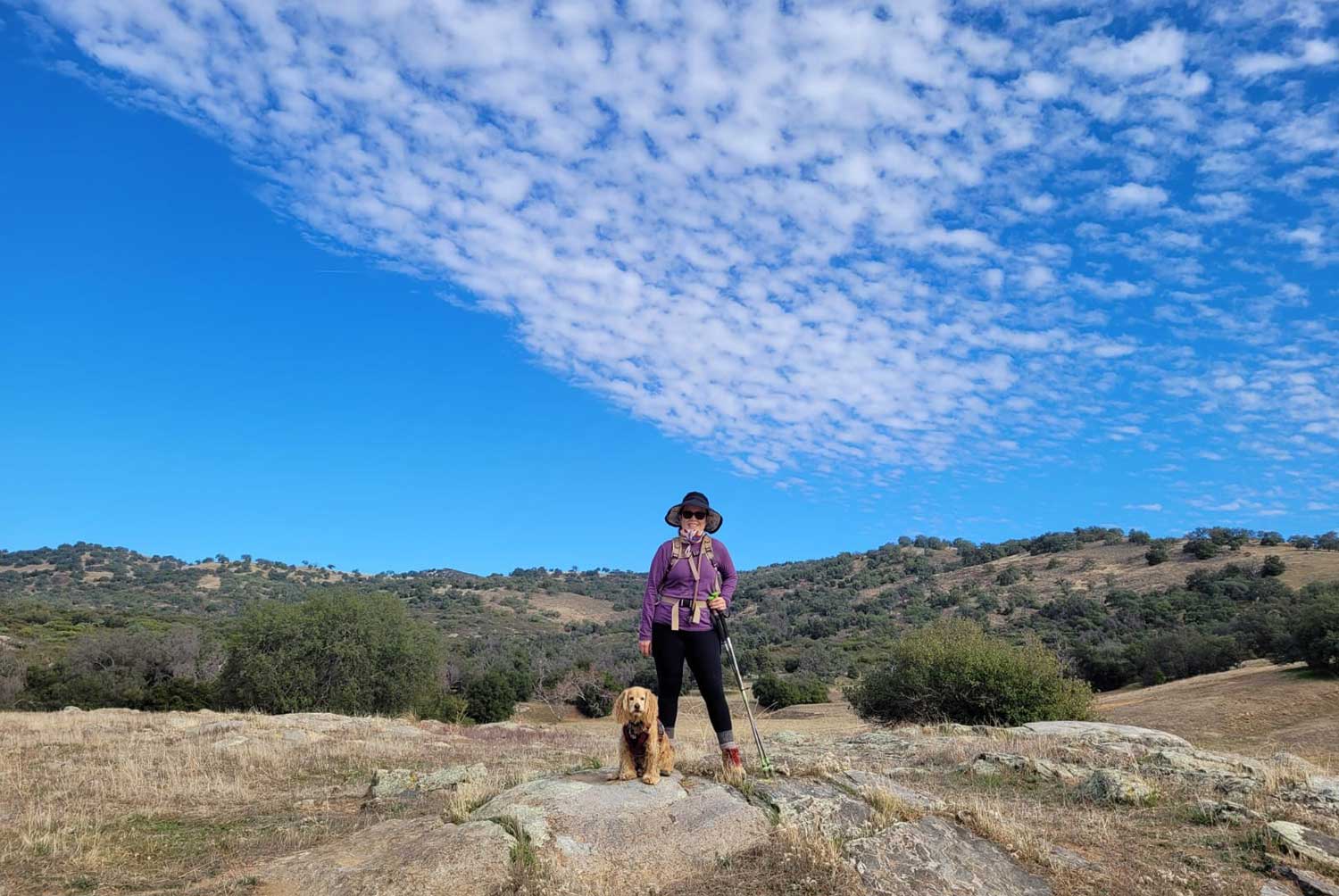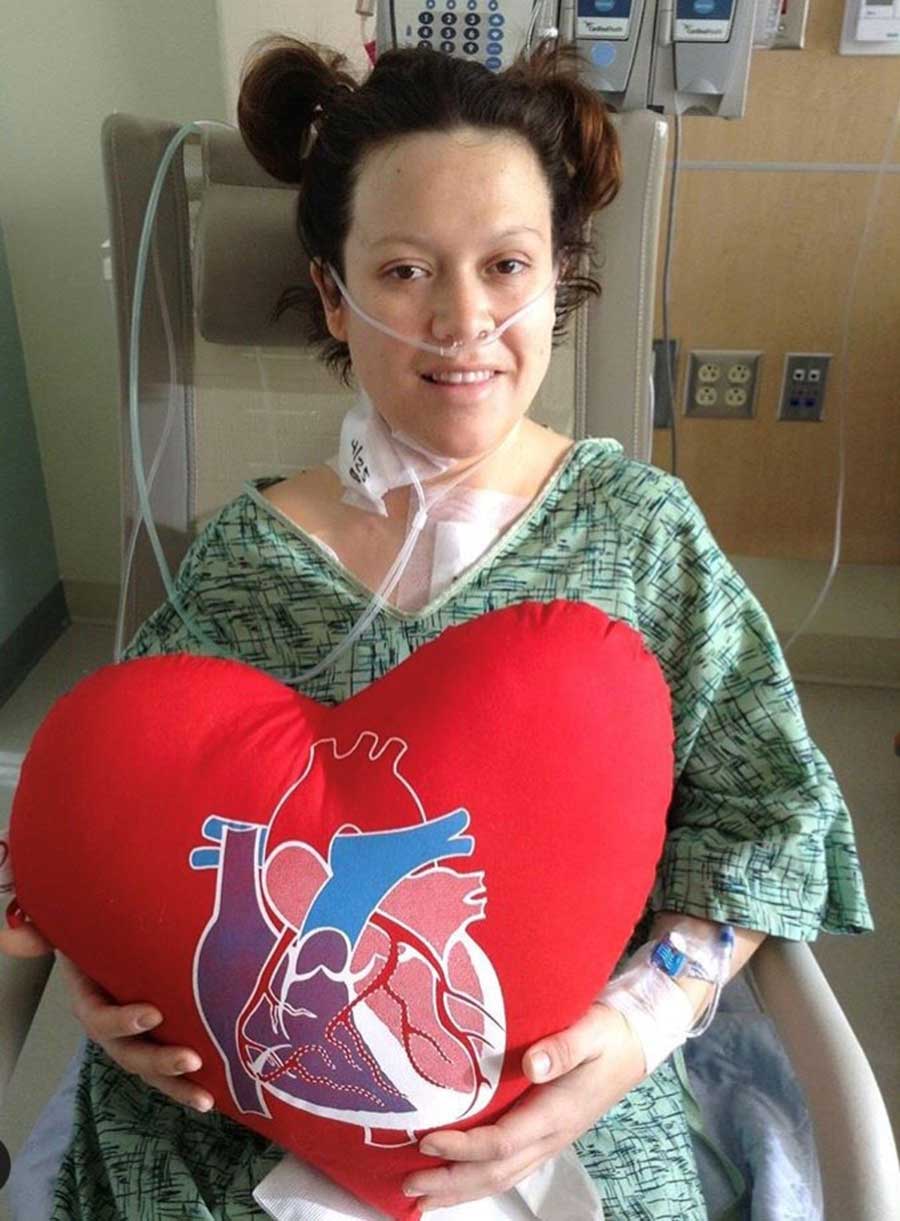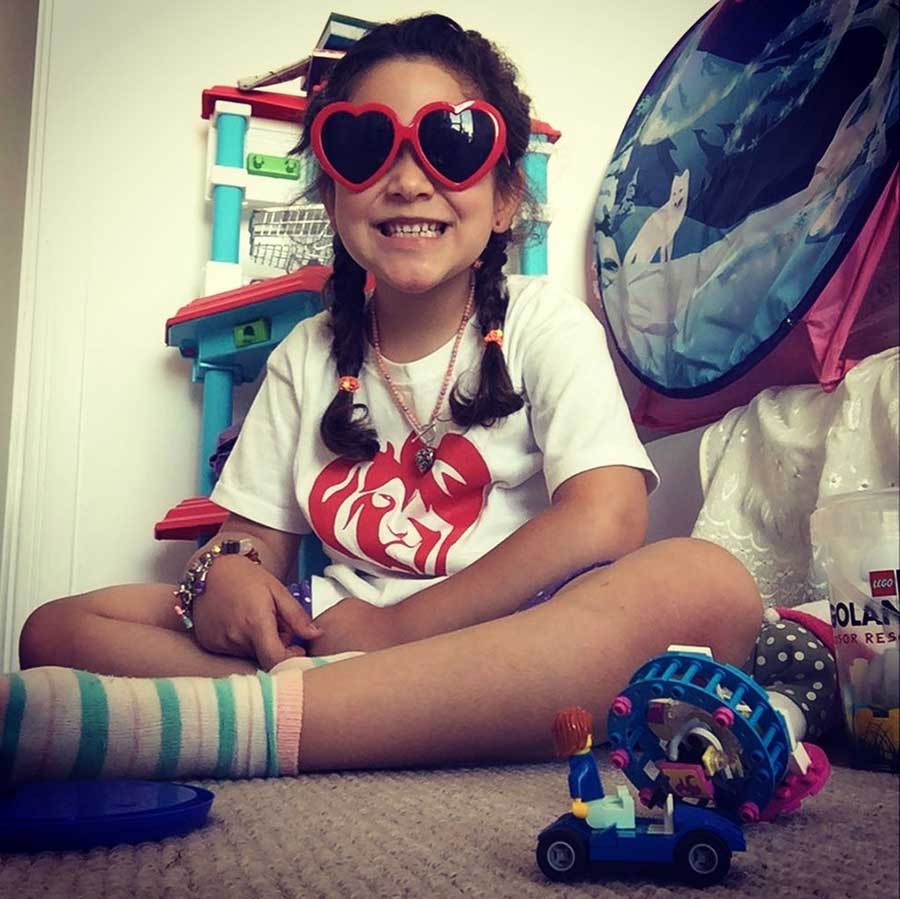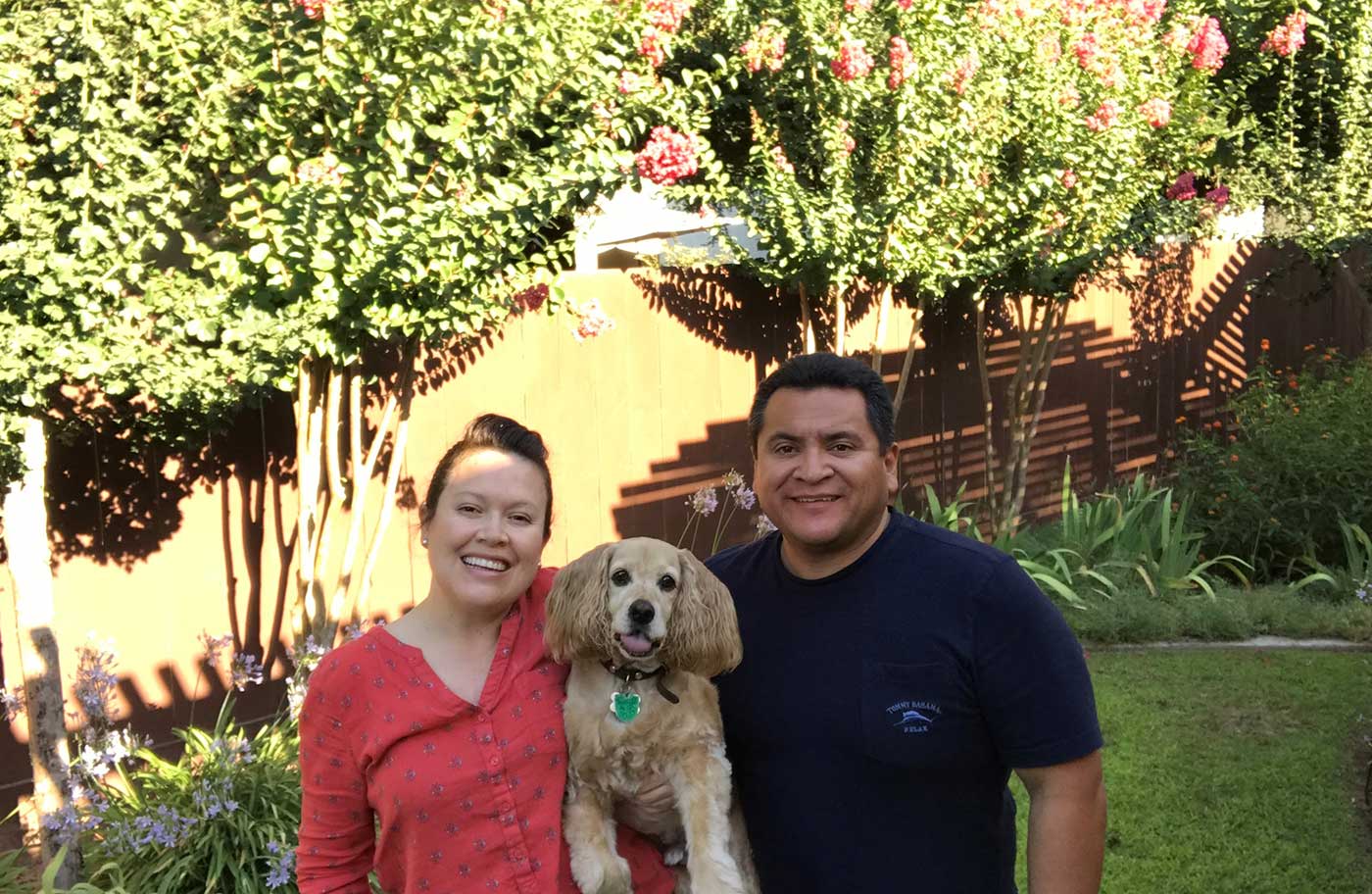By:
- Jeanna Vazquez
Published Date
By:
- Jeanna Vazquez
Share This:

Jessica has lived with congenital heart disease since being diagnosed at seven months old and never let it slow her down. Here she is pictured with her dog hiking in the Santa Ysabel West Preserve. Each weekend, Jessica and her husband hike nearly 10 miles.
Beating the Odds: How a Longtime Heart Disease Survivor Helps Others Facing Surgery

Jessica in 2013, recovering at UC San Diego Health from her fourth heart surgery.
When Jessica Vargas-Miranda was just 9 months old, she underwent open heart surgery after doctors determined she suffered from congenital heart disease. Two months later, she underwent heart surgery again. By the time she was 30, she had endured four open heart procedures.
“I’m the oldest of three. I was born a healthy baby to a loving family. I was growing normally according to all medical standards, but when I was 7 months old my mom noticed something wasn’t right,” said Jessica. “I began sweating profusely and was losing weight, and developed bronchitis that led to severe pneumonia.”
Jessica’s parents took her to the doctor, where they were told their newborn had a congenital heart defect and needed immediate surgery to save her life.
“My parents collapsed,” she said. “The surgeon told them that even with surgery, I had a 10 percent survival chance, but they trusted in the experts and made the decision to move forward with surgery.”
As its name implies, congenital heart disease is present since birth and affects approximately one in every 100 babies born. It is among the most common forms of birth defect. The malformation occurs while the heart is still developing in the womb. Defects can involve the valves within the heart, the interior walls of the organ or the veins and arteries associated with the heart.
The majority of babies born with congenital heart disease require multiple operations during childhood to ensure survival and the chance to reach adulthood.
“In the 1970s, breakthrough cardiac operations addressed problems associated with congenital heart disease,” said Dr. Laith Alshawabkeh, cardiologist and director of the adult congenital heart disease program at the Cardiovascular Institute at UC San Diego Health. “Previously, most babies did not survive. Now, approximately 95 percent of children born with a congenital heart defect are expected to survive to adulthood.”
According to Alshawabkeh, Jessica is on the forefront of a generation of survivors due to these surgical advances.
For Jessica, she didn’t let the challenges with her heart slow her down. She grew up in many places including Mexico City, Chile and Canada before moving to Washington D.C. for college. She majored in government and international politics, and worked at the Mexican Embassy before moving to San Diego in 2008. After her most recent surgery in 2013, Jessica decided to take a break from working and travel the world with her husband and parents.

Jessica’s niece, Emma, wearing their team t-shirt “Lion Heart” for the 2019 and 2020 Adult Congenital Heart Association’s Walk for 1 in 100.
When her sister became pregnant with her first child, Jessica was ready for the new role: Tía Jessy.
“I accomplished a lot professionally and was ready to be an aunt,” said Jessica. “I enjoy every moment I have with my niece and nephews. I’m ‘Tía Jessy’ to them and momma to my sweet dog, Colocho.”
Jessica took up crafting and learned how to sew, cross-stitch quilt and knit. While sheltering-at-home during the COVID-19 pandemic, she passes the time making pajamas for her family, matching dresses for herself and her niece, clothing for her niece’s dolls and a quilt for her newborn nephew.
Jessica also serves in the cardiovascular center’s ambassador program, providing support to patients also living with congenital heart defects.
“We offer patients the opportunity to be peer mentors and ambassadors as support for other patients who are faced with medical decisions, operations or interventions that may bring up difficult memories that many of these patients carry from childhood interventions,” said Alshawabkeh. “The most effective way to address that is to have a peer-mentor who’s been there, done that, and really guide them through these issues that we as providers aren’t able to address at such a personal level.”
Currently, Jessica is an advocate for three different patients living with congenital heart disease.
“Jessica has such a positive outlook on life and it’s been so incredible to see the impact she has on others,” said Alshawabkeh. “Especially during the pandemic, the peer-mentorship program has really helped our patients who are currently sheltering-in-place, often alone. With support from patient ambassadors like Jessica, we’ve been able to ensure all of our patients are taken care of well beyond the medical aspect of living with a heart disease, on that personal level that’s such a vital part of healing.”

Jessica with her husband, Ernesto, and their dog, Colocho.
Patients with congenital heart disease require specialized adult cardiac care to address complex health needs throughout their life. The adult congenital heart disease program at the Cardiovascular Institute at UC San Diego Health provides the only such service in the region. The program features a multidisciplinary team of cardiologists, surgeons, congenital interventional cardiologists, imaging specialists and anesthesiologists. The team also collaborates with cardiologists across the county.
According to the American Heart Association and the American College of Cardiology guidelines, patients with congenital heart disease should begin transitioning from pediatric to adult care at age 16, completing the process in two years.
For Jessica, she says she uses her heart disease as a way to help others and to raise awareness. In 2019, she organized a team for the Adult Congenital Heart Association’s Walk for 1 in 100, and reached second place in monetary donations.
“In life, I don’t look at the negative. I look at the positive,” she said. “My life isn’t over because I have a heart condition and I don’t see myself as the victim. I see myself as a survivor, a warrior. And I have to because I have things to do and things to look forward to.”
Share This:
You May Also Like
Stay in the Know
Keep up with all the latest from UC San Diego. Subscribe to the newsletter today.



